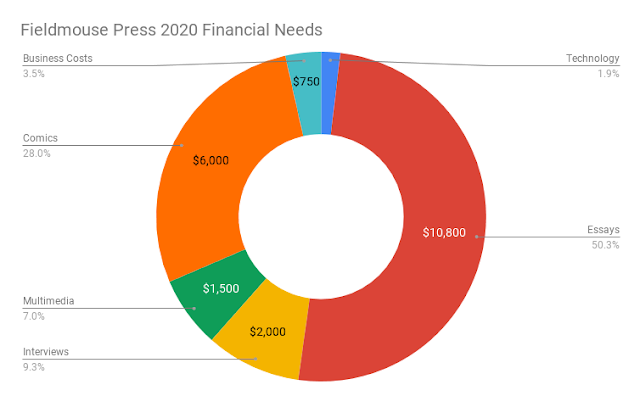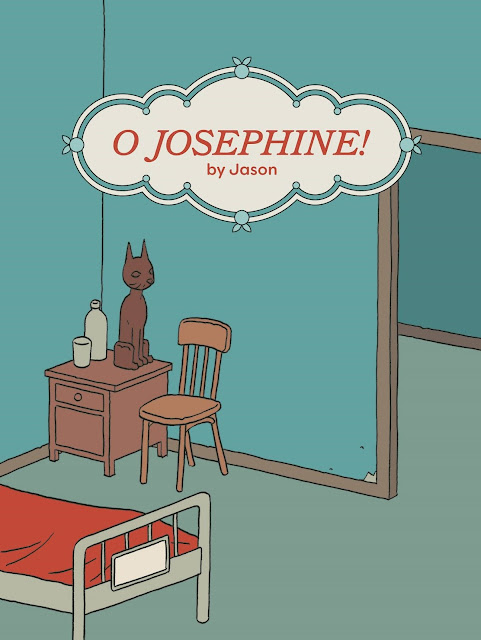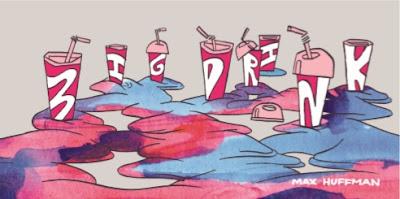There is a subtle tonal shift in
Keiler Roberts' latest collection of autobiographical vignettes,
Rat Time (Koyama Press). That tone is slightly lighter than many of her other books, especially with regard to her own life. In previous comics, when Roberts wrote much more about her daughter Xia, those segments usually proved to be comic relief (with some darker overtones), as opposed to the often darker explorations of her own life (with comedic overtones). Now that her daughter's older, she's still an important part of Roberts' supporting cast, but subjects like toileting, bath time, and malapropisms are no longer the focus. Roberts has written extensively about post-partum depression, having bipolar disorder, and her recent diagnosis of multiple sclerosis. One gets the sense that in
Rat Time, Roberts is almost tired of talking about these topics and prefers instead to unleash her hilariously deadpan sense of humor on page after page.
Opening with a few pages of the sort of minute observations that she does so well, Roberts introduces the reader to the narrative and emotional crux of the book: purchasing pet rats for her daughter Xia. Roberts loves animals, and there are several pages of tender, loving, and sincere depictions of Roberts and Xia playing with and loving on their fuzzy new friends. This allows Roberts to segue into a hilarious sequence of her discussing a supposed TED talk about rats that builds on a reasonable premise and escalates into increasingly silly assertions. The sincere affection she has for her new pets makes this joke all the more effective, as she takes that warmth and redirects it to humor unexpectedly.
After about twenty pages of this rat-based humor, Roberts casually drops this bombshell: "I got the rats because I wanted to stop thinking about MS. They were a kind of alternative medicine--something to love and be optimistic about." This is one of only three times Roberts mentions MS in Rat Time, a dramatic contrast from Chlorine Gardens' focus on the process of getting her diagnosis. One gets the sense that Rat Time, in general, is Roberts' way of not thinking about MS and the ways it affected her life -- especially her ability to create art. While Roberts has always been willing to talk about her medical issues and mental health, it just seems clear that in Rat Time she doesn’t want the focus of her work to be her pathologies.

Instead, Rat Time is about embarrassment, awkwardness, and humiliation. There's a sequence where a friend talks about thinking about going to clown school and defines a clown as someone who, "when faced with a problem, goes deeper into it." Problems escalate and compound on each other for humorous, cringe-worthy effect. This speaks to the Yiddish concepts of schlemiel and schlimazel: the clumsy clown who drops things and the unlucky person who constantly has bad things happen to them, respectively. Rat Time is all about Roberts' experience being both, especially in a public and performative sense.
At home, there are sequences where Roberts disastrously tries to make hot chocolate and pancakes, respectively. The latter is especially hilarious, as Roberts compounds a single error (over-oiling the pan) into a series of pratfalls, burned food, smoke alarms, and burns. An attempt at cooking two things at once fails and results in Roberts storming off in a rage. Best of all was Roberts needing just a moment of privacy to change her tampon while three-year-old Xia was banging on the door, resulting in a mess, yelling, and a crying child. Roberts' willingness to portray herself as the "Keiler Monster" (as described by Xia, referring to how much Roberts hates traveling) is bold because she makes no apologies for her behavior on the page. However, this makes her a perfect vehicle for this humor of anxiety, making her a sympathetic figure even as she plays up how badly she behaves. The difference between her and a clown is that the clown at least has makeup, funny shoes, and a silly wig to indicate that we should laugh at them, while Roberts deliberately leaves the audience hanging with tonal ambiguity.
Roberts sharply explores social awkwardness in other ways in Rat Time. There's a sequence where she relates being massively underprepared to teach an art class, putting up an image of the Pieta`, telling her class "Let's all just look at it for a few minutes." Roberts makes it even more excruciating by noting that there seems to be a single student "rooting for me to pull it together." Roberts digs the knife in a little further when she reveals that the student dropped the class the next day. Roberts sells the scene by making her loose, expressive, and spontaneous line a little more lush and detailed than usual. The key detail is her wearing a blazer to indicate her gravity as an instructor, which makes her lack of preparation seem even worse.

The loose structure of the book allows Roberts to spring these kinds of stories on the reader while alternating them with more conventional, quotidian anecdotes and even full-page illustrations. A loose set of strips about teaching and being taught goes back and forth from her experiences as a teacher and understanding how embarrassing it can be to draw in public, to recalling times she had been humiliated by teachers in high school. Roberts has an uncanny knack for weaving together multiple emotional and narrative through-lines, blending them into each other and using quick call-backs to reestablish themes.
For example, there's a strip about her knocking over and breaking a jar of nail polish when she comes out of the shower. Roberts loves depicting being naked as a way to further establish awkwardness in comedic situations. After cleaning up, she writes in a "gratitude journal" how she is grateful for not getting glass on her feet, that she can buy another jar of polish, etc. Then on the next page, she reveals there is no gratitude journal and makes up entries in her head. The final panel is a reference to depression, one of the few in the book, and it segues neatly into the second half of the book.
That begins with a sequence about crying; Roberts has noted that she cries all the time, often for no reason. A group she's with gives her a patch for her pencil case that says "I cry every day". Ever subverting the narrative, she notes in the strip that she hasn't yet cried that day, to which a friend answers, "There's still time." That's a great gag, but it also points to a real truth with regard to the way she often feels a lack of control of her feelings. Just as Roberts makes her funny stories uncomfortable by adding a tinge of sadness or a reference to illness, so too does she go in the opposite direction and lightens the expected weightiness of the discussion of mental illness in some strips.

That said, the second half of the book is more downbeat and reflective than the first. The humor is subtler and more time is spent in particular on interactions with her parents and family, as well as reflecting on the importance of certain routines in her life. They're more reminiscent of her earlier strips in this regard, but there's a depth with regard to her relationship with her parents that she didn't quite attempt in her older work. Roberts isn't digging at trauma here, but rather remembering certain silly past events and old habits that she hadn't considered or shared much before.
It's all a part of the marvelous tensions of her working method. While her art is bolder and more detailed than ever, she still maintains an essential looseness and spontaneity designed to make the reader feel like an invited guest and observer. While the storytelling structure feels freer and more inclined to comedy, Roberts finds ways to tie back into the book's essential themes. While the book seems at first to be less personally revealing, Roberts pulls back the curtain from time to time to reveal that there is a lot under the surface that she’s not discussing openly. Roberts has expressed that, above all else, she doesn't want to bore people with her accounts of having bipolar, and I imagine the same is true for MS. I think another thing at work here is that Roberts doesn't want her medical conditions to hijack her own narratives.

That's something that sets Roberts' work apart from the sort of thing that Ellen Forney does with regard to bipolar disorder or any number of artists who talk about cancer or other serious illnesses. Those books are about the illness more than they are the person. We only get to know the person by way of the disease, and the narrative almost always serves that end. That said, Roberts still throws in occasional reminders to let the reader know that nothing has changed: Roberts' mental and physical challenges are still there, but she's much more than those challenges. Finding a way to create a sense of hope, warmth, and meaning in her life through the pet rats, seeing her daughter increasingly as a creative force of her own, and passing on kindness to her students is as important as the humor.
First and foremost, Roberts is an entertainer. She wants to make her audience laugh, but she also wants those laughs to sting a little. Like any good clown, she will dive further into her problems until we laugh, even if she has to cry to make it happen. With Rat Time, Keiler Roberts has given herself permission to go all-out in an attempt to be funny, knowing that her commitment to emotional honesty and deep sincerity will keep her and her readers grounded in reality.
-----------------------------------------------------------

































